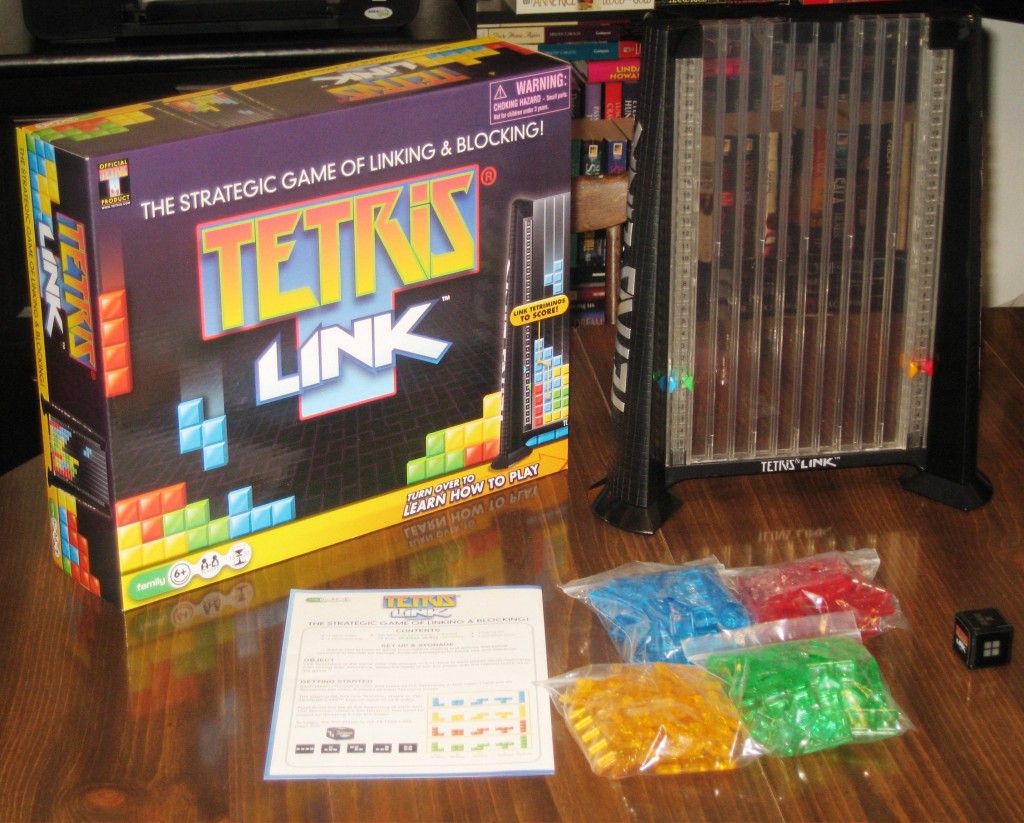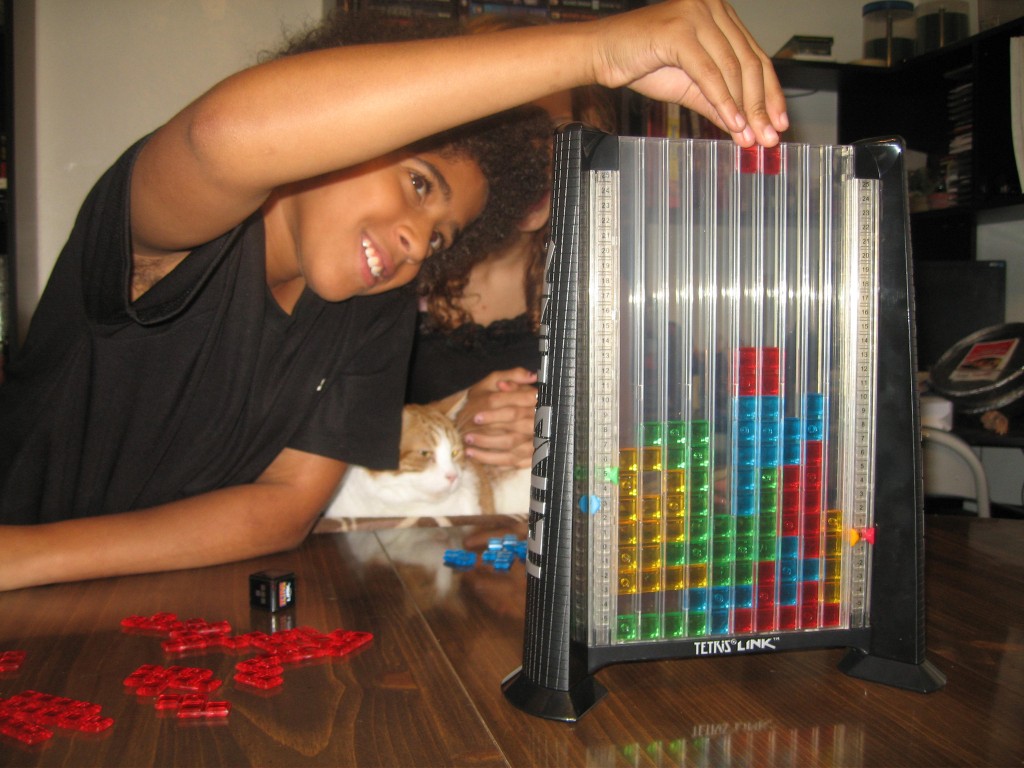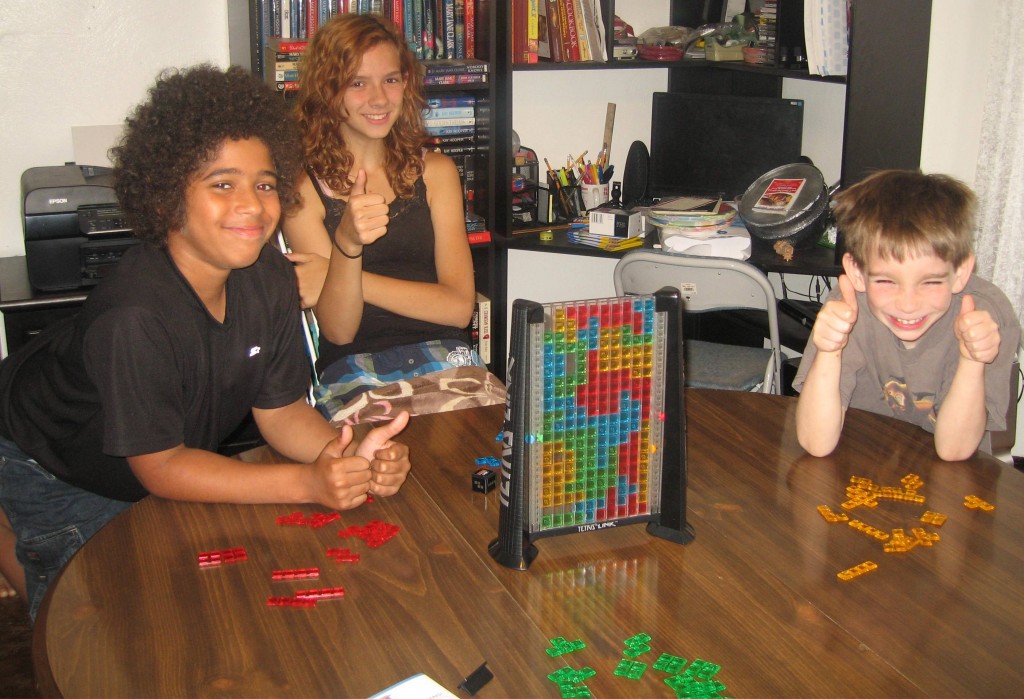I played a lot of Tetris as a kid. I specifically remember being in the back seat of one of my parent’s cars, holding my Game Boy up over my head so that the headlights of the car behind us would allow me to see what I was doing. Those of you who grew up in the XBox / PS2 era might be smirking, but that’s how we rolled in the early 90’s.
Tetris Link plays very similarly to Tetris, except that your goal is to score more points than everyone else playing. All players will be sharing the same field, so different colored Tetris pieces (called Tetriminos) will be stacked on top of each other, jockeying for position. Let’s take a quick look at the components and gameplay before heading into the review.
Components
Tower – This serves as the main playing field, where players will be dropping their Tetriminos. The tower has built-in score markers / sliders to help players keep track of their real-time score.
Tetriminos – These are the pieces that players will be dropping into the tower.
Die – The die has stickers of all of the Tetrimino types. Whichever shape is rolled by the current player is the piece that they must play. The Tetris Link sticker serves as a wild card, allowing players to choose whichever Tetrimino they wish.
Gameplay
This is a very simple game. A player rolls the die and puts the appropriate piece into the tower through its top.
Players are rewarded points if they manage to do the following:
1) Link three of their Tetriminos together, in which case they earn three points.
2) Add a Tetrimino to an existing chain of three or more, in which case they earn an additional point.
3) Connect a group of one or two Tetriminos to another larger chain results in the player earning a point for each Tetrimino that was added to the larger chain. Players don’t score points for Tetriminos that they’ve already scored on, so if you link a group of three and another group of three together using a separate piece, you’d only get one point.
Players lose points for leaving empty spaces under their Tetriminos…one point per empty space. Players will never lose more than two points in one turn.
Whoever has the most points at the end of the game wins. The game ends when players are unable to place any more Tetriminos without them overflowing over the top. You can find the specifics by reading the manual here: Tetris Link.
The Review
The components are positive overall. The colors stand out and the game itself will catch your eye from across the room. Cleaning up everything took less than a minute, as all we had to do was turn the board upside down, sort the pieces, and place them in their own baggies. This is a quick, pick up and play kind of game and would serve well for those not able to commit to a longer game. Its simplicity allows younger kids to get into the fun, though the pieces should be kept away from pets and smaller kids lest they feel like chewing on them.
Carolyn (13), Devonn (11), and Vinnie Jr (11) all liked the game and want to play it again soon. Devonn commented that Tetris is one of his favorite games and finds the puzzle mechanics very fun. I watched each of them analyze the board on their turns and enjoyed watching them try to figure out where they could place their piece to score points while also trying to block others. Part of the strategy involved is in preventing a particular player from building runaway chains and scoring points every turn.
All in all, I recommend Tetris Link for parents looking for a simple game to play with their kids. Not everyone will enjoy its somewhat simplistic gameplay, but I found it to be an adequate alternative to Blokus. This game will make you think a little, and as long as you go in with the expectation and understanding that this is a light strategy game, I think you will enjoy it.
Final Verdict: 9/10
—



